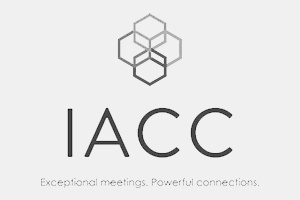Over recent weeks, as a result of COVID-19, many teams around the world have found themselves catapulted at the steep and often resisted learning curve of remote working. Technologies which are still considered by many to be the poor cousin to getting everyone together in a room to get stuff done are suddenly triple-word-score mentions in business continuity conversations. Resistance, as ever, remains futile.
For a host of businesses, this is a curve already climbed. Early adopters have spent years finding the right footholds. They have invested time and money into leveraging the tools available to bring talent from around the world together to solve big problems and make great decisions. For the rest, many more are now looking to embrace similar tools and tips to keep their businesses dynamic. And a great starting place is the often-criticised remote team meeting.
In a recent Harvard Business Review article, Justin Hale and Joseph Grenny outline the four broad reasons for holding a meeting as the need to influence others, to make decisions, to solve problems or to strengthen relationships. They describe these as “active processes” in which “passive passengers rarely do quality work.”

Very true, and it brings us to the common put-down for remote team meetings. This is the assumption that everyone aside from the host is immediately passive; present in username alone. And let’s be honest. Most of us have found ourselves, at one time or other, at the mercy of a colleague droning down a conference phone or lens.
Hale and Grenny go on to state that the “precondition for effective meetings, virtual or otherwise, is voluntary engagement.”
Absolutely! In fact, it’s a golden principle of professional facilitation. One which has been advocated for decades. And by applying the same tried and tested facilitation techniques online, you can still get stuff done together remotely. Moreover, the surprising revelation is it actually forces you sharpen your game. Here’s some tips our Teamscapes Learning facilitators have discovered along the way.
First off, adopt the right tools for the right tasks. Video conferencing, for example, allows participants to apply their emotional intelligence more easily than voice alone. Plus, it enables the host to read engagement and ask on-the-spot questions where required. It’s a powerful tool where the problem to be addressed requires a high level of collaboration and empathy. However, other meetings may only require voice and screen sharing. Given our current global health crisis and the need for more home-working, economy of bandwidth should remain a primary consideration. If video streaming won’t add tangible benefit to the team or task, turn the cameras off.

Collaboration hubs such as Slack or Microsoft Teams are great. Zoom offers the ability to create breakout rooms on the fly, meaning the host can quickly split the group into huddles to answer different questions. She or he can then drop in on these chats and switch people in and out of groups. It’s as easy as facilitating a team of people in a conference room.
There’s a heap of tools out there. Find the one that works best for the task at hand.
Next, meeting pre-work. Clearly define the question that needs addressing, gather the knowledge required to solve the problem or make a decision, and give the ownership of that knowledge to the team member closest to it. Get this pre-work done, the subsequent meeting invariably becomes more productive.
This is true of any meeting of course. However, when robust pre-work is not in place, the cracks show up quicker in the remote arena. You can fudge it more easily when everyone is in the same room. It becomes a think tank. A gathering of views and opinions. Whereas online, passiveness quickly prevails when the ball of ownership is fumbled. It’s a great example of how remote meetings make you up your game and place greater value on the minds and time of your team.

Then, presentation. Allow people no more than five minutes and two slides before others can ask questions, vote on opinions, or whatever the interaction may be. Why? Because content is boring until content is about your audience. When you allow them to internalise it, it becomes meaningful and has traction. Bang on at people, you waste your time and theirs. And when your audience is one undetectable click away from Amazon, it’s important to utilise their brains as much as their broadband.
As an overall note, keep it active and playful. Drop in ice-breakers, set challenges. People feel motivated when they are actors within a task, not just terminals of information.
And with many more people required to work from home right now, respect their home-life. They may have kids home-schooling in another room, or partners who are key workers on crazy schedules. Set lots of breaks, respect time-zones and embrace the flexibility which remote working brings
These are just a few footholds we’ve found on our remote meeting learning curve. There are many more which help to bring Teamscapes Learning services of team development and strategic planning to our clients all around the world.
We’ll keep blogging our learnings. If you have any tips, tricks or pitfalls to watch out for, please share via your preferred social media link below. We’d love to hear them.





